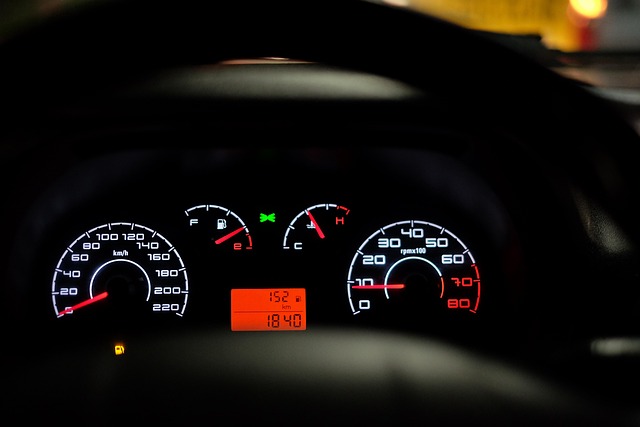Registering a car in California involves understanding specific requirements and gathering essential documents. This step-by-step guide will walk you through the process, from ensuring your vehicle meets state standards to using a VIN verifier to check its history. Learn how to complete the registration online or in person, pay associated fees, and receive your license plate. By following these simple steps, you’ll be legally registered and ready to hit the California highways.
- Understand California Car Registration Requirements
- Gather Necessary Documents for Vehicle Registration
- Use VIN Verifier to Check Vehicle History
- Complete Online or In-Person Car Registration Process
- Pay Car Registration Fees and Receive Your License Plate
Understand California Car Registration Requirements

Before registering your car in California, it’s crucial to understand the state’s specific requirements. All vehicles operated on California roads must be properly registered with the California Department of Motor Vehicles (DMV). This involves submitting essential documentation and ensuring your vehicle meets safety standards. One critical aspect is verifying the Vehicle Identification Number (VIN), which acts as a unique fingerprint for your car, facilitating accurate record-keeping and tracking.
A VIN inspection is a fundamental part of the registration process in California. Using a mobile VIN verifier or performing a traditional inspection at a DMV location, you’ll confirm that your vehicle’s details match the information on file, including its make, model, year, and specific features. This ensures compliance with state regulations, helps prevent fraud, and allows for efficient management of vehicle records.
Gather Necessary Documents for Vehicle Registration

Before you can register your car in California, you’ll need to gather several essential documents. One crucial piece is the Vehicle Identification Number (VIN) – this unique 17-character code is like a fingerprint for your vehicle and can be found on the dashboard or the vehicle’s registration certificate if it’s been registered before. A VIN verifier, often provided by mobile vin inspection services, can help ensure that the VIN is legitimate and matches the vehicle you’re registering.
Additionally, prepare your proof of insurance, which demonstrates financial responsibility and is mandatory for California car registration. You’ll also require valid identification documents such as a driver’s license or state-issued ID card. If you’re transferring ownership, a bill of sale or a previous registration certificate might be needed. Make sure all paperwork is up-to-date and accurate to streamline the registration process.
Use VIN Verifier to Check Vehicle History

Before registering your car in California, it’s crucial to conduct a thorough vehicle history check using a reliable tool like a VIN verifier. This process is essential as it allows you to uncover any potential issues or hidden pasts that might affect your decision to purchase. A mobile VIN verifier can easily access and retrieve detailed information about the vehicle, providing insights into its maintenance records, accident history, and even theft reports. By utilizing this technology, you gain a significant advantage in ensuring a safe and transparent car registration process.
A mobile vin verification service offers convenience by enabling you to perform a vin inspection remotely. This is particularly beneficial for California residents who can easily verify the vehicle’s history before finalising the registration. With just the Vehicle Identification Number (VIN), you can access a wealth of data, ensuring that the car you’re considering is free from any red flags. This simple step adds an extra layer of protection and peace of mind during one of the most significant transactions in car ownership.
Complete Online or In-Person Car Registration Process

Registering a car in California can be done either online or in-person at a DMV field office. The process involves several key steps, including verification of your vehicle’s unique identifier, known as the Vehicle Identification Number (VIN). For added convenience, you can utilize a mobile VIN verifier to confirm your vehicle’s details before beginning the registration process. This ensures accuracy and saves time.
If choosing the in-person route, be prepared with essential documents such as proof of ownership, valid identification, and any required fees. Online registration simplifies matters by allowing you to submit all necessary information digitally. Regardless of your chosen method, completing a VIN inspection is crucial for ensuring your vehicle meets safety and emissions standards, playing a vital role in the successful registration of your car in California.
Pay Car Registration Fees and Receive Your License Plate

After submitting your registration application, the next step is to pay the required car registration fees. These fees vary depending on the type and age of your vehicle. You can typically pay online or in person at a California Department of Motor Vehicles (DMV) office. Once your payment is processed, you’ll be issued a registration certificate and, most importantly, license plates for your car.
It’s advisable to use a reliable VIN verifier like a mobile VIN inspection service to ensure the vehicle’s history is clean before registration. This step helps protect you from potential issues and ensures you’re getting a legitimate vehicle. With your new license plates in hand, you can now legally drive your car on California roads.
Registering a car in California is a straightforward process, but understanding the requirements and gathering the right documents are essential steps. Utilize a VIN verifier to access a vehicle’s history, ensuring everything checks out. You can then complete the registration online or in-person, paying the necessary fees for your license plate. Remember, this process is crucial for legal on-road usage and helps maintain California’s efficient vehicle management system.
